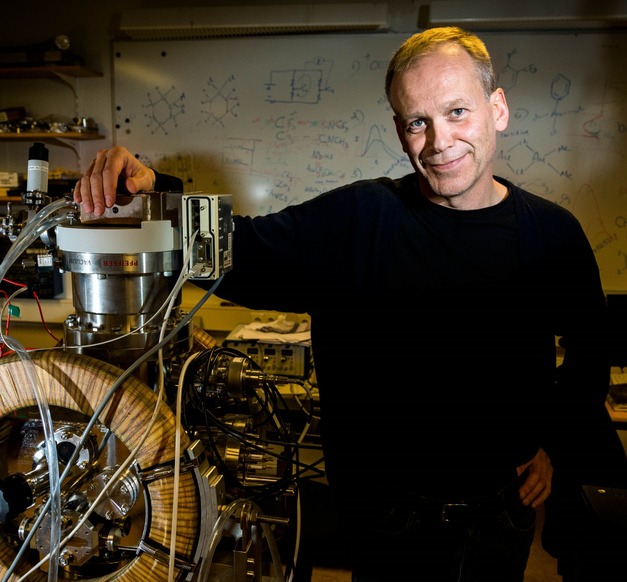Oddur Ingólfsson, Professor at the Faculty of Physical Sciences
"Our goal is to lay the foundation for deeper understanding of the chemistry and physics behind new approaches in the production process of nanotechnology of the future. It is impossible to say how valuable such progress for society as a whole could be, but it is clear that the economic and technological benefits can be significant. The nanotechnology industry is incredibly extensive and has already revolutionised the way we live", says Oddur Ingólfsson, Professor of Physical Chemistry, about a European research and training project in nanotechnology under his leadership.
Oddur Ingólfsson
Nanotechnology is developing fast, which in turn requires increasingly smaller components and better control over material composition.

The project, ELENA, received a four million Euro grant from the Marie Skłodowska-Curie actions ITN programme of the European Commission in 2016. Beside the University of Iceland and the University's Science Institute, 13 other universities, 3 research institutes and 5 companies from 13 countries are involved in the project. This group began its collaboration ten years ago, when Oddur lead a different research project with the goal to connect scientists within a certain field of physics and chemistry. The group has since then worked together on other projects with the focus on the relevance of low-energy electrons in focused electron-beam induced deposition. "Based on these projects and the connections we made, we decided to take our collaboration one step further and apply for a grant with a significantly higher budget, because it takes expensive research and manpower to achieve real results", says Oddur.
The project focuses on chemistry as fundamental to nanotechnology. "Nanotechnology has been called the technology of the 21st century. It is based on a precise control and manipulation of extremely small functional components in technical devices and can be used in various ways. The obvious examples are microprocessors and electronic circuits in computers and communication equipment, but nanotechnology is used in much wider fields today, such as bioengineering and medicine.
Nanotechnology is developing fast, which in turn requires increasingly smaller components and better control over material composition. To respond to this demand, the current international collaboration intends to strengthen research in this field in Europe. "The research group will focus especially on two nanotechnology printing techniques: focused electron-beam induced deposition and extreme ultraviolet lithography", explains Oddur.
Fifteen doctoral students, including three in Iceland, participate in the project. They are expected to become the next generation of leading scientists in the field of chemistry and physics. "The project also aims at developing doctoral programmes in collaboration with universities, research institutes, and companies. The goal is to set an example for European universities, and if successful, we hope that the project will be a model helping us to strengthen doctoral studies in Europe, so that students can receive a more useful and broader education than before", says Oddur at the end of the interview.


